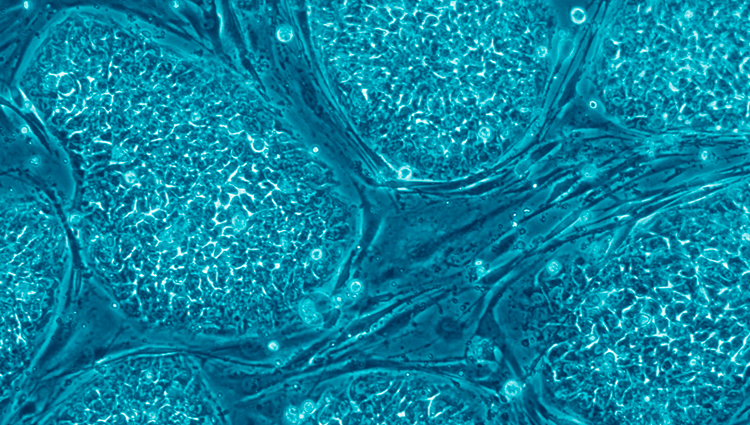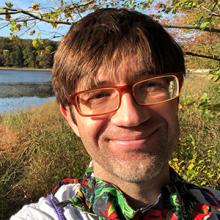2013 Nobel Prize for Physiology or Medicine Awarded Today

(Updated 2:30 p.m. EDT -- see below)
Near midday in Sweden, Göran K. Hansson, the secretary of the Nobel committee for physiology or medicine, named James E. Rothman, Randy W. Schekman and Thomas C. Südhof the winners of the prize in 2013, "for their discoveries of machinery regulating vesicle traffic, a major transport system in our cells."
The Nobel Prize amount for 2013 is set at Swedish kronor 8.0 million per full Nobel Prize, which means the three winners will share about $1.24 million.
Please check back with Inside Science all day long, as we’ll be posting updates to our news story and also adding additional items to this blog post.
Update: 10:25 a.m.
James E. Rothman, 66, is a professor of cell biology, biomedical sciences and chemistry at Yale University, as well as the executive director of the Yale Center for High Throughput Cell Biology. Randy W. Schekman, 64, is an investigator at the Howard Hughes Medical Institute and a professor of cell and developmental biology in the department of molecular and cell biology at the University of California, Berkeley. Thomas C. Südhof, 57, is an investigator at the Howard Hughes Medical Institute and a professor in the school of medicine at Stanford University.
Here are a few fun facts related to this year's Nobel Prize in physiology or medicine:
- The average age of all Medicine Laureates between 1901 and 2012 is 57 years, according to Nobelprize.org.
- In an interview posted on the Nobel Prize website, Göran K. Hansson said that there were 380 nominations for the award this year.
- The three new winners share the 104th award in the category of physiology or medicine. Those 104 prizes have been shared by 204 people. Thirty-eight have gone to one person alone, 32 shared by two people, and this is the 33rd prize to be shared by three laureates.
Update: 12:00 p.m.
A bit about Randy Schekman:
According to a press release from the University of California, Berkeley, Schekman received a call at about 1:30 a.m. Pacific Daylight Time from Sweden, alerting him that he had won the prize. "'My first reaction was, 'Oh, my god!' said Schekman, 64, who was awakened at his El Cerrito home with the good news at 1:30 a.m. 'That was also my second reaction,'” said the statement. Schekman began working at Berkeley in the 1970s, studying yeast cells and the way they move proteins to the cell's surface, among many other issues. He has been the president of the American Society for Cell Biology, the editor of the journal Proceedings of the National Academy of Sciences and is currently editor-in-chief of the open access journal eLife. This profile of Schekman from 2008, published in PNAS, is full of nice biographical details. Here are three:
- As a student, three times he presented at the California State Science Fair.
- He once rode told the police that he was running away from home because his parents "were keeping him from getting a good microscope."
- His freshman chemistry course at the University of California, Los Angeles, was taught by Willard Libby, the inventor of carbon-14 dating.
Here's a podcast from Alok Jha of The Guardian newspaper, featuring an interview with Schekman (beginning at about 3 minutes in). Later in the same podcast, there's an interview with James Watson, who won a Nobel in 1962 with Francis Crick, for their work illuminating the structure of DNA. And finally, here's a light-hearted introduction of Schekman prior to a speech he gave at Lake Tahoe, CA on September 25, 2010, featuring a parody of Jason Mraz's song
"I'm Yours."
Update: 2:30 p.m.
A little bit about James Rothman: In 2002, Rothman shared the Albert Lasker award for basic medical research with Randy Schekman. The award often offers an early preview of future Nobel Prizes (Thomas Südhof won last month). At least 86 Lasker award winners have also won Nobel Prizes. This is a link to an interview Rothman gave with Gunter Blobel, a Nobelist himself, at that time. One highlight comes at about 4:45, when Rothman admits that when he started his research lab, he took a pretty big risk when he began working at Stanford in 1978 by throwing out typical methods and adopting an entirely new approach to studying the intricacies of cells. "In the hindsight of middle age," he said, "that seems like a risk. At the time, it didn't seem like any risk at all."
Here are two infographics from a Scientific American article Rothman wrote in 1996, along with Lelio Orci: Transport vesicles, and another depiction of vesicles. A little bit about Thomas Südhof: In addition to the research rewarded by the Nobel committee, Thomas Südhof has worked on multiple notable projects, including developing a mouse model of autism spectrum disorders, and that a precursor of the amyloid plaque that's diagnostic of Alzheimer's disease can switch on genes within cells. He gave an interview to The Lancet in 2010, which included a handful of nice details. His most influential teacher was the one who… taught him to play the bassoon, because he "taught me that the only way to do something right is to practice and listen and practice and listen, hours, and hours, and hours." Also, he always carries with him "A pen, a book of poetry, and ear plugs."
Here's a link to a technical lecture that Südhof gave at Vanderbilt University in 2012, summarizing his research. He takes the stage at just before 9 minutes. And finally, here's the YouTube video of the prize announcement, with additional commentary from committee members.
That's all for today's coverage. Don't forget to read our news story on the science of the prize, and please come back on the 8th for our coverage of the physics prize, as well as on the 9th for our coverage of the chemistry prize.

